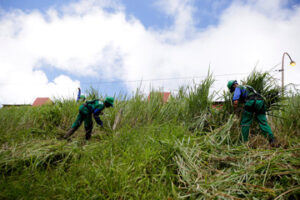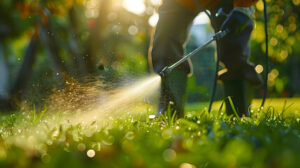Roofing is an important construction activity. It shields the indoor living space of a building from diverse climate factors, such as rain, snow and cruel UV rays.
A roof can be made of a wide range of practical materials. Some, like flat white concrete tiles, reflect heat away from buildings, saving on cooling costs. Contact Erie Roofing now!

The roof has always been an essential part of a home, protecting people and possessions from the elements. Early people were limited to roofing materials that could be found locally, and so they developed a number of innovative designs to accommodate their environmental challenges.
For instance, pre-historic hunters and gatherers built shelters with reeds or animal hides. As civilization grew, however, these primitive structures gave way to more permanent buildings with more sophisticated roofing.
Thatching, one of the earliest roofing methods, used dried vegetation such as straw or reeds to cover a building. While thatching offered insulation and warmth, it was flammable, making thatched huts susceptible to fire. Fortunately, people quickly discovered fire-resistant materials like mud and stone to replace thatch.
Ancient Egyptians, for example, created flat temple roofs to allow for sunlight and air flow. To support these weighty, textured materials, builders constructed a framework of columns and stone roof tiles called architraves. The ridges of these flat roofs were decorated with mythical animals known as crouching beasts, which served both a decorative and symbolic purpose. The size and number of crouching beasts was an indication of the rank of the person who lived in the house.
The Greeks made a significant advancement in roofing when they began to use terracotta tiles. These fired clay tiles, called imbrex and tegula, were stronger than thatched tiles and less prone to fires. This new technology also allowed builders to create a more aesthetically pleasing design without the need for sloping eaves.
Chinese architecture was influenced by both their natural surroundings and their own desire for beauty in their architectural designs. The curved upward edges of their roofs—called feiyan ()—were inspired by Southeastern Asian bamboo and palm tree branches, while their unique dougong bracketing system was a demonstration of China’s ingenuity in creating structures that were both sturdy and aesthetically appealing.
Thatching
The roof is a fundamental component of any building. It shields the inside from diverse climate factors, including rain, snow, hail and cruel UV rays. It also keeps indoor temperatures comfortable and stops leaks. Historically, roofs have been constructed in many different forms, reflecting cultural and ecological influences as well as construction and aesthetic considerations.
Thatching is the ancient craft of layering dry vegetation such as straw, water reed, sedge (Cladium mariscus), rushes, palm branches or coir to form a protective covering for buildings. Thatching is a low-cost alternative to conventional materials, especially in developing countries. It is also a popular choice for people who wish to build or purchase an eco-friendly thatched dwelling.
In the UK, thatching is traditionally constructed with long wheat straw (Triticum aestivum). This material can be used in either plain or sparred thatching; the former having distinctively sparred edges. It is a highly durable roofing material, with a life cycle of 12-15 years before it will need replacing.
A thatched roof is naturally weather-resistant and insulating, as air pockets within the straw thatch provide effective insulation in both warm and cold conditions. In addition, a steep roof pitch allows precipitation to drain away from the building quickly, minimising any moisture damage.
A thatched roof requires regular maintenance to prevent excessive thatch accumulation. Thatch accumulates when soil conditions do not sustain high populations of soil microorganisms that decompose organic matter, such as dead stems and leaves. This is often the case in poorly aerated, compacted soils and can be exacerbated by inappropriate lawn care practices, such as over-watering and over-fertilising. These factors, as well as acid soil conditions, can cause the deterioration of thatch.
Clay Tiles
Invented in antiquity, clay tiles are one of the most durable roofing materials available. They can last up to 100 years with proper maintenance. They are also energy efficient, with natural airflow allowing heat to dissipate and save energy. Clay tile roofs can complement a variety of architectural styles, adding distinction to any home.
Originally crafted by hand, clay roofing tiles are now made using a mix of malleable clays with different desirable properties and then fired in a multi-stage kiln process to achieve a final shape. Tints are added to produce a wide range of colors. Clay roofing tiles come in a variety of shapes and sizes, ensuring there is a style to fit every taste.
Installation of a clay tile roof can be tricky, and requires the expertise of a professional roofing contractor. These tiles are heavy, requiring a strong and stable roof structure to support their weight. They are also brittle, making them more likely to break if walked on or damaged. Moreover, the tiles must be laid in a precise pattern or else they won’t match up properly.
A good roof underlayment is crucial for clay roofing, as well. This material should be at least two layers of asphalt-impregnated roofing felt or a self-adhering bituminous membrane. The underlayment should also be fastened securely to the deck, and additional layers may be needed in areas prone to high winds.
It’s also important to have your roof inspected about once each year by a professional roofing contractor. This can help identify early signs of damage and prevent issues from worsening. These inspections can also reveal the need for structural repairs and/or a roof replacement.
Flat Roofs
Flat roofs have become a popular choice for many homeowners and new home builders, who appreciate their practicality and aesthetic. They’re also often more energy-efficient than sloped roofs. In addition, they can accommodate a variety of outdoor living spaces, such as rooftop gardens and recreational areas. These features can increase property value and offer a peaceful respite from the busy city streets below.
However, these roofing systems are not without challenges. One of the most common issues is water pooling, which can lead to rot and structural damage. The problem is often caused by inadequate drain maintenance, where gravel, leaves or other debris block the spigots, downpipes or gutters. These obstructions also create a high pressure head, forcing water into even the smallest holes and cracks. This issue can be avoided by using proper drainage systems and regular inspections.
Another issue is poor insulation, which can contribute to excessive heating and cooling costs. To reduce these costs, it’s important to use thermal insulation materials with good heat retention properties. These materials can help reduce energy bills, while also improving indoor comfort.
A flat roof can be constructed from a wide range of materials, including single large factory-made sheets like EPDM synthetic rubber, PVC or thermoplastic polyolefin (TPO). Alternatively, they can be made from several layers that are bonded together using hot or cold seaming processes.
Flat roofs typically do not have eaves, which adds to their sleek and straightforward appearance. They’re most commonly used on commercial buildings, and they’re often built from concrete and steel to maximize durability. In these buildings, a traditional pitched roof can be replaced with a flat roof by adding a second story or installing heavy equipment like HVAC units.
Agable Roofs
Gable roofs are a popular option for home design, and they can be quite aesthetically pleasing. Their simple design allows for easy installation and maintenance, and they can be complemented with decorative features such as brackets, pediments and other ornamentations. They also provide ample space for attic storage and ventilation. As a result, they are ideal for achieving energy efficiency in your home.
The gable roof style has two sloping sides that meet at a central ridge and form a triangle shape at each end. The sloping sides can be left open, as in an open gable roof design, or they can be enclosed as in a boxed gable roof. Gable roofs are a common feature in New England and the east coast of Canada, and they have been featured in several well-known works of literature, including Nathaniel Hawthorne’s “The House of Seven Gables” and Lucy Maud Montgomery’s “Anne of Green Gables.”
A gable roof is versatile enough to be used in many different architectural styles. It can be found on Colonial-style houses, Tudor-style houses and even Queen Anne-style homes, which incorporate elaborate details like cross gables and gingerbread trim. They are also an important feature of the Cape Cod-style house, which features a front gable and dormers in the attic.
In addition to their aesthetic qualities, gable roofs are also efficient at draining water thanks to their steep slopes. They can be further improved by installing ridge vents, which help to moderate indoor humidity and temperature. Ridge vents can also extend the lifespan of your HVAC system and contribute to lower energy bills.






